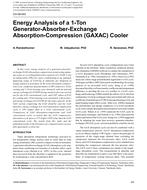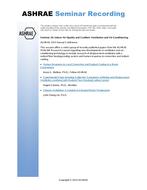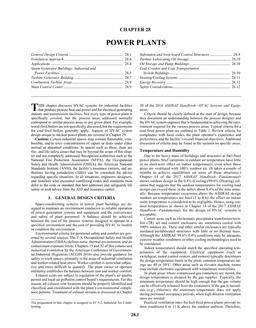The present study compares the performance between a constant-speed air-conditioner and a variable-speed airconditioner subject to identical operation conditions. Influences of added heat load, ambient temperature, and setting point temperature on the system performances had been examined. The results show that the average consumed power is increased with the increase of heat load and with the decrease of Tset. Also, the variable-speed AC consumes less average power than that of the constant-speed AC under the same heat load and Tset. For the same initial room temperature, the constant-speed AC can reach setting point earlier. Although the variable-speed AC takes a longer time to reach the set point temperature, its compressor operates at a low speed operation as Tset reached. Thus, the consumed power is reduced in the long term operation and the room set point temperature can be maintained at a more stable condition than the constant-speed AC.
Units: Dual
Citation: ASHRAE Transactions, vol. 115, pt. 1, Chicago 2009
Product Details
- Published:
- 2009
- Number of Pages:
- 7
- File Size:
- 1 file , 3.7 MB
- Product Code(s):
- D-CH-09-034


